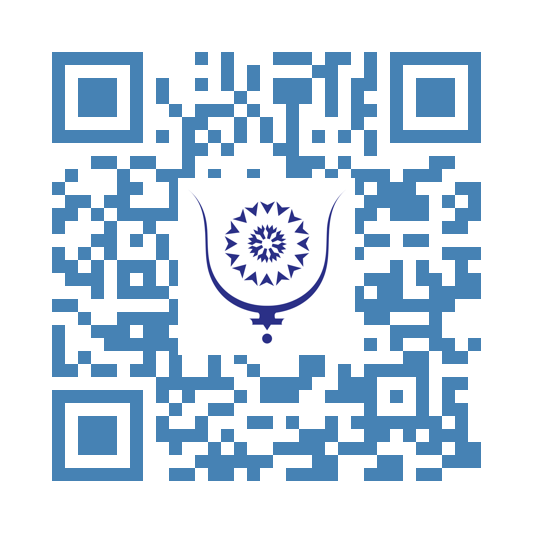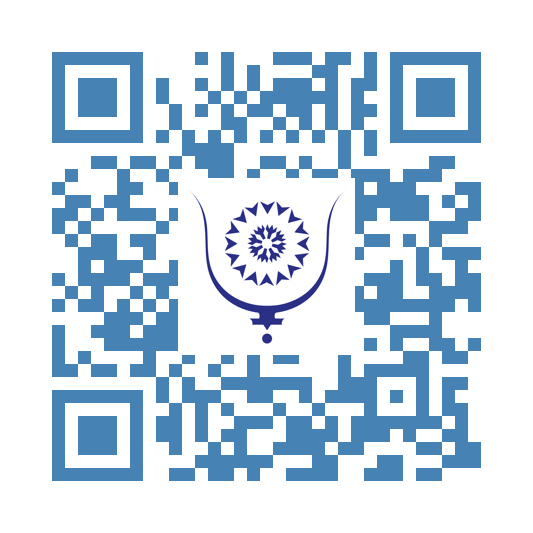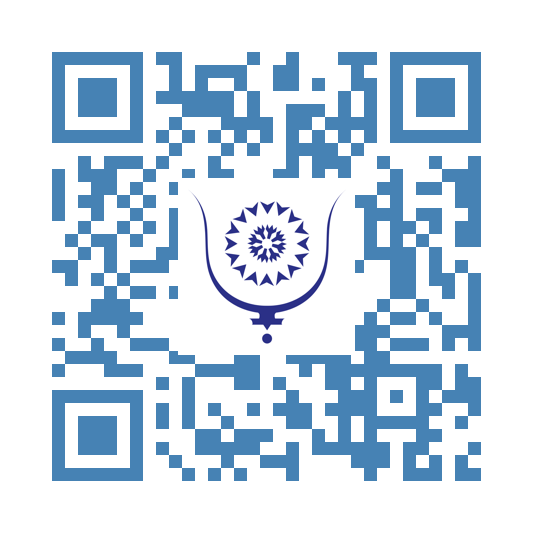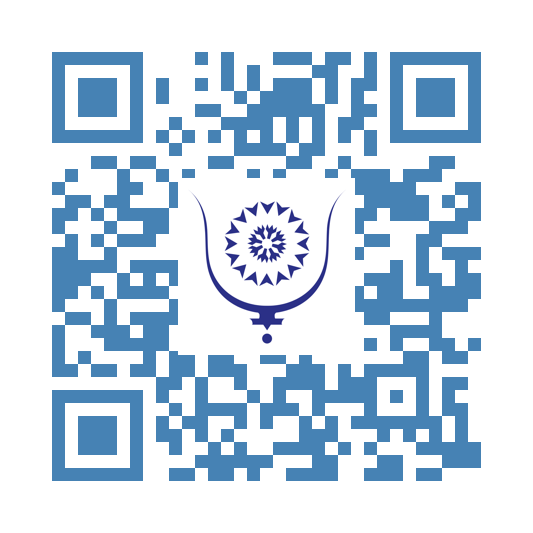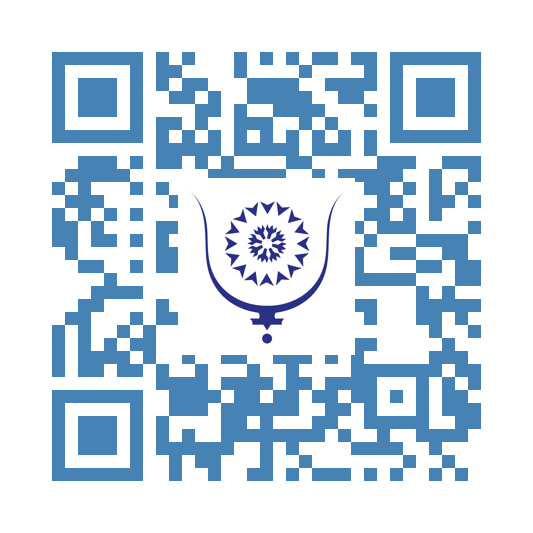Between Ideology and Pragmatism: The Spanish Radical Left's Controversial Stance on Moroccan Sahara...
78
I confess here that it was the writings of Si Lahcen Hadad that pushed me to take a closer interest in this Spanish left, which positions itself in opposition to the Sánchez government, which is itself left-wing. Not reading Spanish, I am therefore somewhat less inclined to pay attention to the repeated ignominies of this left, sick from not being able to access power, sick from its aborted history, sick from what it actually is. So, to exist, it invented a cause. Too bad if it understands nothing about it, too bad if it harms Spain’s interests, too bad if it distorts history, ignores geography and demography, too bad if its reasoning, if it is reasoning at all, is far from logical, too bad if it lies outrageously. The important thing is to exist and to appear to the Spanish public as the defender of the causes of the most deprived... No matter if those people harmed the Spanish people; no matter if they have Spanish blood on their hands. Manifest bad faith.
In Spain, therefore, a significant part of the radical left, mainly represented by formations such as Unidas Podemos, an alliance between Podemos, Izquierda Unida, and other minority groups, maintains a posture—let’s say critical, if not belligerent—towards the Kingdom of Morocco.
This contradictory position is fed by a historical prism marked by colonial memory, “anti-imperialist” struggles, but also by the question of the Sahara, called the "Spanish Sahara" until 1975, as it was a former territory under Spanish domination until the Green March in 1975.
This radical left considers Morocco a belligerent and threatening actor. The debate is not limited to territorial disputes: it fits into an ideological vision where the Moroccan state is often presented as an authoritarian and repressive regime, described as a neocolonial power. This is what underpins the repeated support for the artificial Sahrawi cause, presented as an anti-colonial and anti-imperialist fight. Support for the Polisario Front thus seems embedded in the DNA of these “gauchos,” regardless of developments.
Historically, several components of the Spanish left have expressed clear support for the Polisario Front, founded in 1973, which was nevertheless supported by Gaddafi, then hosted, supplied, and armed by the Algerian regime with the aim of harming Morocco’s interests. This support manifests itself in various forms:
- Filing parliamentary motions in defense of the right to self-determination for this small part of the Sahara alone;
- Participation in international pro-Polisario forums and associative networks that blindly support it, regardless of reports on the embezzlement of aid, rapes, and flagrant human rights abuses in Tindouf;
- Pressure on the Spanish government and European institutions to recognize the political status of the Sahara, neglecting to mention that it was formerly occupied by their country, as a territory to be decolonized, in opposition to Morocco’s historical sovereignty. Even the autonomy proposal, well known in Spain, does not seem to satisfy them.
However, it should be noted that this support comes in a context of strong internal contestation in Spain. Since the socialist government of Pedro Sánchez expressed its support in 2022 for the Moroccan autonomy plan, this radical position has somewhat fractured. This change reflects a pragmatic adaptation by some to the geopolitical, economic, and migratory realities that closely link the two countries.
Faced with challenges related to managing migratory flows through the occupied enclaves of Ceuta and Melilla, as well as security and economic cooperation with the Kingdom of Morocco, the Spanish government has refocused its diplomacy. This has led to a gradual distancing of the left—but not the radical left—from the Polisario, thus marginalizing its influence on official policy.
In this context, some voices within the radical left still try to persuade European institutions to keep pressure on Morocco, demanding that the so-called Western Sahara remain central to priorities to resolve an “unresolved colonial conflict.” Parliamentary groups and “pro-Sahrawi” NGOs continue to denounce bilateral agreements between Madrid and Rabat, refusing that the issue be sidelined in favor of a more “pragmatic” diplomacy.
Spanish and European institutions, the theater of these ideological tensions, thus see the radical left forces seeking to have the question of the so-called Western Sahara recognized as a “state matter.” They denounce Moroccan control over this dossier and strongly contest the diplomatic normalization policies carried out by Madrid.
This line reflects a deep political fracture, where post-colonial idealism and outdated self-determination claims clash head-on with political realism marked by the search for regional strategic balances.
Support for the so-called Sahrawi cause is not without controversy. Activists, commentators, and victims have recalled that the Polisario Front was, in the past, involved in violent operations in Spanish territorial waters, causing the death of Spanish fishermen.
These painful episodes resonate in Spanish public opinion and fuel a virulent critique of radical positions that support a movement with a past combining political struggle and violent actions. This memory weighs heavily in contemporary debate and is exploited by political forces opposed to these radical left positions, notably the Spanish right.
The question of the Sahara, a territory that was Spanish for a time, remains an important point in relations between Spain and Morocco. However, current political, economic, and security realities push for pragmatic Spanish diplomacy, favorable to strengthened cooperation with Rabat, thus marginalizing the radical stance on both governmental and international stages.
The historical legacy is here perfectly exploited for contemporary necessities in managing Ibero-Moroccan relations.
Today, after consulting numerous articles and writings recounting the positions of this left of another era, I understand a little better Si Lahcen Hadad's fight on the subject, and even more so his sharp responses to the remarks of a certain Ignacio Cembrero, whom I now see only as a bland neurotic. Thank you, Si Lahcen.
One question remains: why is the Moroccan left not more inclined to take a stand and strongly denounce the alienated stance of their Spanish counterparts?
Share:
Between Ideology and Pragmatism: The Spanish Radical Left's Controversial Stance on Moroccan Sahara...
copy:
https://bluwr.com/p/281705762
Theurgy
285
Theurgy (Greek: θεουργία, theourgía, “divine work”) is the sacred art of invoking and communing with the divine through ritual acts, moral purification, and contemplative discipline. Emerging from the spiritual philosophy of late Neoplatonism, especially as formulated by Iamblichus (c. 250–325 CE), theurgy is distinguished from other forms of magic by its noble ideal - the soul’s ascension and union (ἕνωσις, henosis) with the divine source.
Unlike goetia, which seeks to manipulate material outcomes, theurgy is fundamentally initiatory and redemptive. It engages the practitioner in a disciplined ascent through the metaphysical hierarchy of existence, beginning in the sensory world and leading toward the transcendent unity of the One. This ascent is made possible through divine grace and ritual participation in the cosmic order. The theurgist operates within a universe conceived as a great chain of being (σειρά, seira), extending from the indescribable source through the divine intellect (νοῦς, nous), the soul (ψυχή, psyche), and the celestial intelligences, down to the elements of the material world. Through sacred rites, one may ascend these levels of reality by re-establishing communion between the soul and its divine archetype.
At the heart of theurgical practice lies the invocation of spiritual intelligences—gods, archangels, planetary powers, and cosmic intermediaries—through symbolic actions, sacred statements, and hieratical rituals. These acts are not merely symbolic or theatrical, but sacramental: they are performed to align human activity with the divine will and to reflect the eternal order of the cosmos within the temporal world. Iamblichus stressed that such union with the gods could not be attained through philosophical reasoning alone. Rather, one must engage in ritual action using sacred symbols, divine names, and purificatory rites to render the soul receptive to the divine presence.
The practice of theurgy was closely tied to philosophical ethics and interior purification. The theurgist was expected to live a disciplined life, cultivating virtue, moderation, and piety. This internal preparation was as crucial as the external rite, for the soul must be made capable of bearing divine illumination. Through repeated engagement with divine acts, the practitioner refines the spiritual vehicle and becomes gradually elevated to recognize the higher realities without distortion.
Historically, theurgy developed as a synthesis of Platonic metaphysics, Chaldean oracles, Egyptian temple rituals, and mystery initiations. While rooted in the classical world, its influence extended into the Middle Ages and Renaissance. Figures such as Marsilio Ficino and Giordano Bruno drew heavily on theurgical principles in their Hermetic and Neoplatonic revivals. In modern esotericism, especially within orders such as the Hermetic Order of the Golden Dawn, theurgical ideas persist under the structure of ritual magic, planetary invocations, and Qabalistic ascent.
The ultimate goal of the theurgist is apotheosis—not in the sense of personal glorification, but in the restoration of the soul to its divine pattern, beyond all individuation. As Iamblichus declares in his treatise On the Mysteries:
“Theurgy unites us to the gods, not through thought, but through divine acts.”
In this sense, theurgy is not merely a practice, but a sacred path—a divine remembrance enacted through the body, soul, and spirit, leading the practitioner not toward mastery of the world, but toward reintegration with the divine fullness (πλήρωμα, pleroma) from which all emanates.
Share:
Theurgy
copy:
https://bluwr.com/p/278216127
Morocco, History, and Geography: The Foundations of Political Reality and Territorial Integrity...
470
Politics cannot be separated from history or geography. It consists of a set of actions and decisions aimed at organizing a society internally, as well as in its relations with the rest of the world. It is always situated within a context shaped by the two fundamental dimensions of history and geography, which are by no means mere backdrops but rather provide the framework within which political projects, conflicts, and developments unfold. Politics may be influenced by an ideology—born of a philosophy—or simply shaped by a given context, but such influence rarely lasts.
History plays a fundamental role in understanding political phenomena. A country’s institutions, laws, and values are rooted in its collective memory, an inheritance made up of major events, breaks, or continuities with the past. Borders, for example, are often drawn following wars or treaties, the outcome of ancient or recent conflicts. They remain visible marks of past rivalries, defeats, victories, and compromises. Relations—whether of solidarity or rivalry—between nations, regions, or communities are explained in light of shared or divergent histories.
The present Kingdom of Morocco cannot be understood without reference to its millennial origins, to the centuries-old Sharifian Empire, nor to the successive dynasties that shaped its relationship to religion, allegiance, and the centralization of power throughout different eras.
Similarly, geography significantly influences the choices and constraints of public policies. The distribution of natural resources conditions economic development, territorial organization, and power relations. Relief, climate, and access to maritime routes determine possibilities for urbanization, agriculture, communication, and defense. Border situations impose specific diplomatic and security policies, while landlocked or insular areas require tailored strategies. Some authors even describe Morocco as an “island country” due to its geographical configuration.
It is therefore inconceivable to conceive of effective or legitimate politics without taking history and geography into account. Every choice, reform, or political ambition must be based on a deep understanding of the territory and collective memory; ignoring one or the other exposes one to illusion, misunderstanding, or even failure.
Regarding the Sahara, referred to as the “Western Sahara,” the geography of this region is undeniably contiguous to Morocco, physically, demographically, and historically: the Saharan populations have largely contributed to the country’s evolution. Its history was written through the successive allegiances of its tribes to the sultans of Morocco, and the Sharifian kingdom thus constitutes a nation-state established long before the contemporary era.
Weakened by having missed the crucial turn of the industrial revolution, the Sharifian Empire was dissected from south to north, but also from the east. The so-called Western Sahara was annexed by Spain, which exercised colonial control there from 1884 to 1975. This situation facilitated France’s domination over territories grouped into French West Africa, part of which later became Mauritania. France also appropriated the eastern part of the Sharifian Empire, annexed de facto to its departments conquered from the Ottoman Empire and called French Algeria. The remainder was placed under French protectorate, while northern Morocco came under Spanish rule.
Independence, achieved in 1956, and the gradual decolonization of Sidi Ifni and Tarfaya concerned other regions only later.
On November 28, 1960, France authorized the proclamation of Mauritania’s independence—a region then claimed by Morocco, as were territories under Spanish control that Morocco considered its own. At that time, there was a Moroccan ministry called the “Ministry of Mauritanian and Saharan Affairs,” headed by Mohammed Fal Ould Oumeir, a representative of those territories.
From 1963 onwards, the kingdom raised the issue of the Spanish Sahara before the Decolonization Commission. The situation became complicated when newly created Mauritania also claimed the territory, notably to pressure Morocco, which did not recognize Mauritanian independence until 1969—nine years after its proclamation. Morocco continued to claim the Spanish Sahara peacefully, preventing the Liberation Army from pursuing military actions in the region.
In 1973, the creation of the Polisario Front (Popular Front for the Liberation of Saguia el-Hamra and Rio de Oro) marked a new stage. This movement initially aimed to unite the Saharan territory with the “motherland.” But in a context of regional rivalries and ideological tensions, the Saharan question was instrumentalized by various actors.
Muammar Gaddafi’s Libya played a decisive role in the rise of the separatist Polisario, supporting and arming the movement in a "revolutionary" and pan-Arabist logic, while seeking to destabilize the Moroccan monarchy. Later, Gaddafi himself admitted having made a “strategic mistake” in backing this group, which remains a destabilizing factor in the region today.
In 1975, a peaceful turning point occurred: bolstered by the International Court of Justice’s opinion recognizing ties of allegiance between Saharan tribes and Moroccan sultans, the late King Hassan II launched the Green March to general surprise. This mobilization pushed Spain to withdraw from Laâyoune in favor of Morocco, which immediately reclaimed the territory. Mauritania, although having occupied adjacent zones, ultimately withdrew, leaving Morocco alone against the Polisario Front, actively supported by Algeria, which hosted, armed, financed, and elevated the movement into a “republic.”
Houari Boumédiène’s Algeria exploited the situation to weaken its Moroccan neighbor, even calling the Saharan issue a “thorn in Morocco’s side,” a way of exacting revenge for the crushing defeat in 1963.
This dispute has often overshadowed the deep history of ties between Morocco and these territories under Sharifian authority well before the colonial era. For Morocco, territorial integrity rests firmly on the constants of history and geography—major arguments. The rest is merely a temporary construction without foundation, destined to fade into oblivion in the near future.
Moroccans know this very well… Perhaps not everyone else…
Share:
Morocco, History, and Geography: The Foundations of Political Reality and Territorial Integrity...
copy:
https://bluwr.com/p/275453220
Ahmed Faras: The Eternal Legend of Moroccan Football
701
I have been fortunate enough to know Ahmed Faras. It is unbearable for me to speak of him in the past tense, someone who has been part of my life for so long. It had been ages since he last touched a ball. Few are still alive who saw him play, those who, match after match, would await his dribble, his runs down the wing, his shot, his goal.
Faras was an outstanding man, with an incredible shyness and reserve. Even when present somewhere, he was always on the sidelines: discreet, courteous, kind, with deep sensitivity, affection, and great touchiness.
But Faras will always be part of the present. He is a true legend of Moroccan and African football; legends never die.
Fedala saw him born in the cold of December 1947. Mohammedia would be his city and Chabab his eternal club. At the time, there was no such thing as a transfer market, no migrations, no football mercenary spirit. You were born in a club, learned to play there, and you stayed. His temperament was not that of a typical striker: there was no aggressiveness, no cunning. He compensated with his genius and never needed to dive or roll on the ground to sway a referee or create confusion. His genius spared him all that. He was an exceptional striker who marked the history of Moroccan and continental football. The turf at El Bachir football stadium helped him, at that time, it was the best in Morocco.
Ahmed Faras was the product of a generation shaped by the structured environment of the youth sports schools run by the Ministry of Youth and Sports, a system supposedly dismantled by so-called administrative and political reforms. Yet, it was there that Morocco's champions were formed, across all sports. His early path was marked by the guidance of renowned trainers such as Lakhmiri, who helped shape numerous Moroccan talents. This solid foundation allowed him to develop technical skills and a sense of teamwork very early on, which would become hallmarks of his play.
Ahmed Faras spent his entire career at Chabab Mohammedia, from 1965 to 1982, never having a professional contract—such things didn’t exist in Morocco then. There’s no need to mention signing bonuses or performance awards, even with the national team. His loyalty to Chabab is remarkable. He would lead the club to a Moroccan championship and become its top scorer. He would bring along with him his playing friends—Acila, Glaoua, Haddadi, and many more.
Faras was a pillar of the Moroccan national team. With 36 goals in 94 caps, what a historic scorer for the Atlas Lions! He captained the national team for eight years, playing in the 1970 World Cup in Mexico and the 1972 Munich Olympic Games.
In 1975, Ahmed Faras entered the legend by becoming the first Moroccan to win the African Ballon d’Or, an award that underlined the quality and consistency of his play. This distinction placed him among the greatest players on the continent, competing with the top African stars of his era. There was talk of a transfer to Real Madrid...but at the time Moroccan league players were barred from moving abroad under penalty of losing their place in the national team. The idea was, thus, to strengthen the domestic league...
The peak of his career was surely the 1976 Africa Cup of Nations (CAN), won by Morocco in Ethiopia. Faras was the leader on the pitch, the tournament’s top scorer, and his influence was decisive for this historic triumph—the only major African title that Morocco has ever won. He scored crucial goals against Nigeria and Egypt in that tournament, perfectly embodying the role of playmaker and team leader on the field. To this day, he remains the only Moroccan captain ever to lift the coveted African trophy.
I have been a few times to that ground in Addis Ababa where he lifted the trophy, and every time, his image dominates my thoughts. An indelible black-and-white, forever etched in the history of the Kingdom and in the memory of Moroccans who followed the match at the time through the voice of one Ahmed Elgharbi...no live broadcasts back then.
He was a respected and heeded captain, guided by great coaches: Abdelkader Lakhmiri, Blagoe Vidinic, Abdellah Settati, Jabrane, and especially Gheorghe Mardarescu during that epic campaign in the land of Emperor Haile Selassie. His charisma and vision of the game were crucial in unifying the team and leading them to the summit of African football. Faras embodied the spirit of conquest and national pride throughout the tournament. The squad was selected and led by an outstanding manager as well Colonel Mehdi Belmejdoub.
His name is forever bound to that legendary achievement, a symbol of the potential of Moroccan football when guided by exemplary leadership, committed and knowledgeable managers, and players who were true warriors for their jersey’s colors.
Ahmed Faras was not just a talented player. After his retirement, he continued to share his passion, getting involved in youth training, passing on his knowledge and love for the game to the new generation. He has been a source of inspiration for so many generations of players.
Knowing Lhaj Ahmed Faras meant knowing a symbol of loyalty, talent, and unique leadership in Moroccan sports. His name will forever remain inscribed in collective memory as that of a football giant, whose legacy goes beyond sport to inspire entire generations.
Rest in peace, my friend. One day, a great football stadium in this country will bear your name, and it will be fitting, if the players follow your example, honor your career, and if the public rises to your greatness, paying tribute to your distinguished name.
So Lhaj Ahmed Faras, if you ever meet Acila up there, ask him to give you another nice pass, and tell Glaoua to defend well...
Know that your star shines and will always shine above us in the sky of the beautiful country you cherished so much.
---
Share:
Ahmed Faras: The Eternal Legend of Moroccan Football
copy:
https://bluwr.com/p/272896781
The Monad
1007
The Monad is found at the highest level of existence, being the eternal, indivisible spark of the Divine. It is not a being in the conventional sense, but a pure center of consciousness, a point of origin that transcends time, space, and form. The Monad is a direct emanation of the Absolute, the One Source, and contains within itself the total potential of divine intelligence and will. The Monad beholds the entire cosmos, reflecting it inwardly without division or movement.
For the purpose of experience, evolution, and the expansion of consciousness, the Monad unfolds itself. This process does not mean that a fragmentation occurs, but emanation, in accordance with the laws of sacred geometry and cosmic harmony. The Monad expresses itself into twelve individuated Soul aspects — each a radiant expression of its divine essence. These are sometimes called Oversouls, Higher Selves, or Solar Selves in esoteric traditions. Each of these twelve Souls remains intimately connected to the Monad, yet takes on a unique pathway of spiritual development and service.
Each Soul, in turn, extends itself into twelve Spirits, or individual incarnating identities, that manifest across the dimensions of space and time. These Spirits are what we often understand as human personalities — seemingly separate lives, yet each one is a temporary projection of a higher spiritual intelligence. These incarnations serve to gather experience, to learn through contrast and duality, and ultimately to return to unity through the path of conscious realization.
Thus, from a single Monad emerge:
1) 12 Souls (higher, eternal selves).
2) Each with 12 Spirits (incarnated personalities).
3) That results in 144 individuated expressions of the original divine spark.
This structure is an archetypal framework encoded within the very fabric of the universe. The number 144 is not coincidental: it is directly related to sacred numerology and appears in mystical scriptures such as the Book of Revelation, where the 144,000 sealed servants symbolize the perfected collective of awakened souls.
In this model, the journey of each incarnated Spirit is not isolated, but part of a vast, intricate tapestry. All experiences — joys, sorrows, triumphs, and trials — are transmitted upward through the Soul to the Monad, enriching the totality of divine being with wisdom distilled through the lens of individuality. The Monad, untouched and changeless, still gathers all of these reflections into itself in perfect harmony.
To know oneself, then, is not merely to understand one’s personal identity, but to awaken to the truth that we are emanations of a higher Soul, and beyond that, of a singular Monad — a spark of God.
Share:
The Monad
copy:
https://bluwr.com/p/264947973

